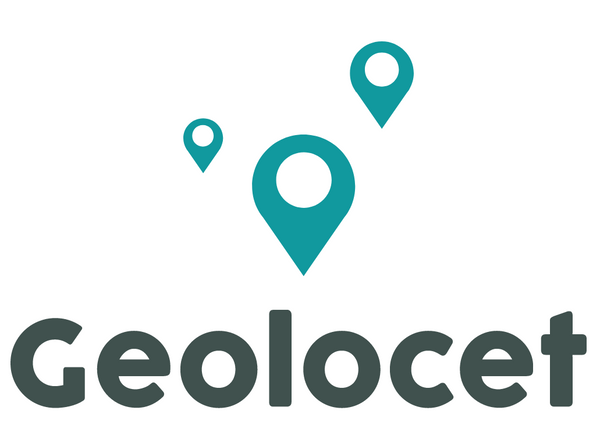Understanding income distribution is key to making informed business, policy, and investment decisions. Geolocet’s 2024 Bulgarian Personal Income Data provides detailed insights into income levels across all 265 municipalities in Bulgaria — enabling you to assess regional differences, market potential, and population purchasing power with precision.
Regional distribution of income levels
An examination of the data reveals clear regional contrasts across Bulgaria.
Among municipalities in the highest income ranges, major population centres include Kazanlak, Svoge, Plovdiv, Varna, and Burgas. These areas report average personal incomes between €12,000 and €16,000 per year, reflecting strong local economies supported by manufacturing, logistics, and services.
At the very top, Sofia (City) stands out with the highest average personal income in the dataset — exceeding €16,000 per year — reflecting its role as Bulgaria’s political, economic, and financial centre. The capital’s strong service sector, international business presence, and concentration of high-skilled employment drive income levels well above the national average.
By contrast, the lowest income ranges (below €8,000) are observed in smaller and more rural municipalities such as Petrich, Popovo, Rakitovo, Ardino, and Dospat. These areas are typically characterised by smaller labour markets, limited industrial activity, and a higher reliance on agriculture — underscoring the ongoing economic disparity between urban centres and peripheral areas.
Industrial hubs driving higher income levels
An additional pattern observed in the data is the notably higher income levels in municipalities with strong industrial and energy-based economies.
Municipalities such as Chelopech, Pirdop, Panagyurishte, Devnya, Galabovo, Radnevo, Kozloduy, Simitli, and Dolna Banya consistently fall within the upper income ranges, despite not being among the country’s largest population centres. What these areas share is a common economic foundation built on mining, metallurgy, chemical production, or energy generation.
For example:
- Chelopech, Pirdop, Panagyurishte — copper and gold mining and processing.
- Devnya — chemical and cement production.
- Galabovo and Radnevo — part of the Maritsa East energy complex (coal and power production).
- Kozloduy — host to Bulgaria’s only nuclear power plant.

These industrial and energy sectors provide stable employment and higher-than-average wages, enabling these smaller towns to outperform many regional centres in average personal income.
Income in the largest cities
Looking at the top ten municipalities by population, the pattern becomes even clearer. Sofia (City) leads with an average personal income above €16,000. Plovdiv, Varna, and Burgas follow with income levels in the €12,000–€13,500 range.
Cities such as Stara Zagora, Ruse, Pleven, and Sliven occupy middle-to-high income bands between €10,000 and €12,000. Even smaller urban municipalities within the top ten — Pazardzhik and Pernik — record average income levels above €10,000.
Across all municipalities, the national average income midpoint is around €9,500, meaning every one of Bulgaria’s largest cities performs above this level. This highlights the strong concentration of wealth and economic activity in Bulgaria’s main urban areas, alongside a persistent income gap separating them from rural municipalities.
Income data for Bulgaria
Our dataset covers all 265 municipalities in Bulgaria, offering a comprehensive view of average personal income levels. The data is structured at the municipal level (LAU 1), allowing detailed analysis and comparison across regions such as Sofia, Plovdiv, Varna, Burgas, and beyond.
Each municipality record contains:
- Total population
- Total number of households
- Total employed persons
- Average personal income (presented in income bands)
Income values are grouped into clearly defined ranges to simplify comparison and visualisation, for example:
- €8,001–€8,500
- €9,501–€10,000
- €10,001–€11,000
The dataset is based on information from the Bulgarian National Statistical Institute (NSI). Geolocet further enhances and models these official statistics using proprietary data modelling techniques to ensure consistent coverage, comparability, and usability across all 265 municipalities.
Applications across industries
This dataset supports a wide range of Location Intelligence and market analysis applications, including:
- Retail and FMCG — identify areas with higher purchasing power to optimise store locations and product targeting.
- Real estate development — assess local income levels to guide residential and commercial investment.
- Public sector and policy planning — monitor income disparities and support equitable regional development initiatives.
- Financial and insurance services — refine customer segmentation and risk assessment strategies.
Combine with other datasets
The Bulgarian Income Data can be seamlessly integrated with other Geolocet datasets for deeper insights:
- Demographics Data — understand population structure alongside income distribution.
- Administrative Boundaries — link income data to municipal or regional boundaries for mapping and visualisation.
Turn data into decisions
Granular, reliable income data is essential for businesses and institutions seeking to understand Bulgaria’s diverse economic landscape. With Geolocet’s Bulgarian Personal and Household Income Data, you can move from assumptions to evidence-based strategies.
Dataset coverage: 265 municipalities (LAU 1) — municipal-level income bands, population and household counts, and employment statistics.
Ready to explore?
Explore our Income dataset or Request a tailored dataset
Prefer a demo or have specific requirements? Contact our team and we’ll tailor data to your region, industry, or project.
Similar Products
If you're interested in datasets like this one, here are other income indicator products you may want to explore:
- Belgium: Download Income Indicators at statistical sector Level
- Denmark: Download Income Indicators at Parish Level
- Germany: Download Income Indicators at Small Area Level
- Greece: Download Income Indicators at Municipality Level
- Italy: Download Income Indicators at Municipality Level
- Ireland: Download Income Indicators at Small Area Level
- Finland: Download Income Indicators at Post Code Level
- France: Download Income Indicators at IRIS Level
- Netherlands: Download Income Indicators at Statistical Sector Level
- Portugal: Download income Indicators at Freguesia level
- Spain: Download Income Indicators at Statistical Sector Level
- Sweden: Download Income Indicators at Statistical Sector Level
- United Kingdom: Download Income Indicators at Small Area Level

